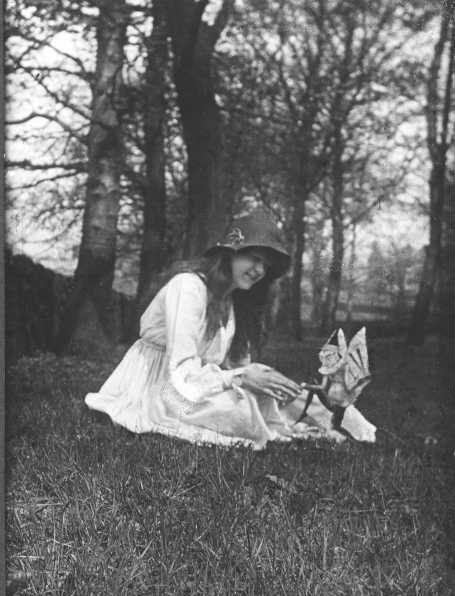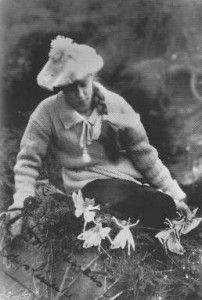
Elsie Wright presented with a posy of harebells
The Fairy Investigation Society‘s recent Fairy Census, published in January this year and covering 2014-2017, is a fascinating snapshot of contemporary perceptions of the fairy realm. As I have already discussed, there is much that is new in modern fairy sightings, but there is also much that seems to come straight from traditional folklore sources, mixed up with the more contemporary and anomalous experiences. There are quite a few experiences which would be very familiar to our ancestors of the sixteenth and seventeenth centuries, although the examples of each are all quite limited in number.
The sorts of aspects of Faery I’m discussing here tend to be those that sit less well with the benign image of fays that has become so prevalent now. Here are a few examples:
- Hiding or moving things– the mischievous removal or concealment of personal possessions, often keys or jewellery, was reported a few times;
- Pixie-led– in a second manifestation of fairy mischief, there was a handful of cases in which individuals found themselves lost or going in circles in a familiar place or within a small area where the exits were nearby and clear;
- Abductions– in only ten cases (1% of the total) there seemed to have been an attempt to abduct a person (half involved adults and half children). Several times a strong feeling of compulsion was reported, often tempered by a sense of fear- even in situations where the fairies’ conduct was not in itself threatening: for example, they seemed to be dancing or playing;
- Time distortion– it’s well known that time can pass very differently in Faery and this was mentioned in several reports. Most often hours were lost or unaccounted for. Memorably, one witness described the sensation as “time felt twisty” (no.225);
- Music– traditional accounts very frequently link music and dancing with fairy sightings. In the Census music was heard in only 11% of cases. In half of these bells the music came from bells, although sounds like pipes, voices and drums were also reported. Six of the witnesses compared what they heard to Irish or ‘Celtic’ music. As regular readers may recall, ceol sidhe is an especially Irish phenomenon;
- Dancing– once the commonest pastime of our good neighbours, this was mentioned but in only 3% of the modern cases;
- Conventional terms were often resorted to as a frame of reference or as a label for what the person experienced. Mention is quite often made in the Census of pixies, dryads, elves, gnomes, dwarves, leprechauns, brownies and goblins. The traditional dress associated with these were reasonably common too- clothes of green, red and brown and caps, quite often pointed. The most interesting of these accepted fairy ‘types’ were the four mentions of ‘banshees.’ The being’s hollow, mourning cry was what provoked the identification; in two of the cases, a death was felt to be directly related to the premonition; and,
- Fairy temperament– many contemporary writers describe faes as kind, friendly and helpful- full of good will to humans and to the natural world. The older idea of fairy character was generally a lot darker and echoes of this are to be found in some of the Census cases. Witnesses sensed anger, hostility and even outright malice in about 3% of cases; they felt fear in 6%. In one instance in the Census- and one in Marjorie Johnson’s Seeing fairies– there was an impression that the fairy was mocking the human for some reason (Census no.475; Johnson p.24). Balancing these negative emotions, there were also a few reports in which the human sensed the fairy’s interest or curiosity in them or what they were doing.

Elsie Wright again
The Census therefore presents us with an intriguing combination of traditional and wholly novel elements. Only a few of the encounters involve interaction, so that the majority are descriptions of brief sightings (frequently of flying beings). Nevertheless we come away with the impression that fairy encounters are an evolving body of law, with new perceptions or reactions added to the older understandings.
See too my posting on who believes in fairies for some further discussion of the Census statistics and their breakdown by age and gender.







